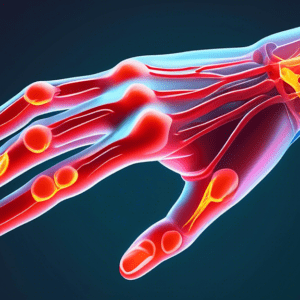Understanding the Connection
Carpal tunnel syndrome, a common condition affecting the hand and wrist, often manifests as tingling, numbness, and pain. While these sensory disturbances are well-known symptoms, muscle weakness can also be a significant and often overlooked aspect of this condition. This article delves into the intricate relationship between muscle weakness and carpal tunnel syndrome, exploring its causes, symptoms, diagnosis, and treatment options.
What is Carpal Tunnel Syndrome?
Carpal tunnel syndrome arises from the compression of the median nerve as it travels through the carpal tunnel, a narrow passageway in the wrist. The carpal tunnel is formed by the carpal bones, small bones in the wrist, and the transverse carpal ligament, a strong band of tissue that spans across the wrist.
The Median Nerve: A Vital Pathway
The median nerve, originating in the neck and extending down the arm, plays a crucial role in hand function. It provides sensation to the thumb, index finger, middle finger, and part of the ring finger. Additionally, it controls the muscles responsible for thumb movement and fine motor skills.
Compression and Its Consequences
When the median nerve is compressed within the carpal tunnel, its ability to transmit signals effectively is compromised. This compression can lead to a range of symptoms, including:
- Tingling or numbness in the thumb, index finger, middle finger, and part of the ring finger
- Pain that may radiate up the forearm to the elbow
- Weakness in the hand, particularly affecting grip strength and fine motor control
- Clumsiness and difficulty with tasks requiring precise hand movements
Muscle Weakness: A Key Symptom
While sensory disturbances are often the initial symptoms of carpal tunnel syndrome, muscle weakness can develop as the condition progresses. This weakness typically affects the thenar muscles, a group of muscles located at the base of the thumb, which are responsible for thumb movement and opposition.
As the median nerve compression worsens, the muscles may begin to atrophy, or waste away, leading to a decrease in muscle bulk and strength. This can significantly impact hand function, making it difficult to perform everyday tasks such as gripping objects, buttoning clothes, or using tools.
Causes of Carpal Tunnel Syndrome
A variety of factors can contribute to the development of carpal tunnel syndrome, including:
- Repetitive hand movements: Activities that involve repeated hand and wrist motions, such as typing, using a computer mouse, or assembly line work, can increase the risk of carpal tunnel syndrome.
- Awkward hand positions: Maintaining the wrist in a bent or extended position for prolonged periods can also contribute to nerve compression.
- Underlying medical conditions: Certain medical conditions, such as diabetes, rheumatoid arthritis, and hypothyroidism, can increase the risk of carpal tunnel syndrome.
- Pregnancy: Hormonal changes during pregnancy can cause fluid retention, which may contribute to nerve compression in the carpal tunnel.
- Obesity: Excess body weight can increase pressure on the nerves in the wrist.
- Genetics: Some individuals may be genetically predisposed to developing carpal tunnel syndrome.
Diagnosis and Treatment
Early diagnosis and treatment are crucial in preventing long-term complications associated with carpal tunnel syndrome, including permanent nerve damage and muscle weakness. A comprehensive approach to diagnosis typically involves:
- Physical examination: A thorough evaluation of the hand, wrist, and arm to assess for any sensory disturbances, muscle weakness, or other abnormalities.
- Nerve conduction studies: Electrodiagnostic tests that measure the speed and efficiency of nerve impulses in the median nerve.
- Electromyography (EMG): A test that measures the electrical activity of muscles, helping to determine the extent of muscle involvement.
Treatment Options
Treatment for carpal tunnel syndrome aims to relieve nerve compression and improve symptoms. Conservative management options often include:
- Wrist splinting: Wearing a splint, particularly at night, helps to keep the wrist in a neutral position, reducing pressure on the median nerve.
- Medications: Nonsteroidal anti-inflammatory drugs (NSAIDs) can help to reduce pain and inflammation. In some cases, corticosteroid injections may be recommended to provide short-term relief.
- Physical therapy: Exercises and stretches can help to strengthen the muscles in the hand and wrist, improve flexibility, and reduce pressure on the median nerve.
- Lifestyle modifications: Making ergonomic adjustments to the workplace, such as using ergonomic keyboards and mouse pads, can help to prevent further nerve compression.
In cases where conservative treatments fail to provide adequate relief, or when muscle weakness is significant, surgical intervention may be considered. Carpal tunnel release surgery involves cutting the transverse carpal ligament to relieve pressure on the median nerve.
Prevention Strategies
While not all cases of carpal tunnel syndrome are preventable, there are steps you can take to reduce your risk:
- Take breaks: When engaging in repetitive hand movements, take frequent breaks to rest your hands and wrists.
- Maintain proper posture: Avoid awkward hand positions and keep your wrists as straight as possible when typing or using a mouse.
- Use ergonomic tools: Consider using ergonomic keyboards, mouse pads, and other tools designed to reduce strain on your hands and wrists.
- Stay active: Regular exercise and stretching can help to keep your hands and wrists strong and flexible.
- Manage underlying conditions: If you have any underlying medical conditions that increase your risk of carpal tunnel syndrome, such as diabetes or rheumatoid arthritis, work with your healthcare provider to manage these conditions effectively.
Conclusion
Muscle weakness can be a debilitating symptom of carpal tunnel syndrome, significantly impacting hand function and quality of life. Recognizing the signs and symptoms of this condition, seeking early diagnosis, and exploring appropriate treatment options are essential in preventing long-term complications. If you are experiencing any symptoms of carpal tunnel syndrome, consult with a healthcare professional for proper evaluation and management.
